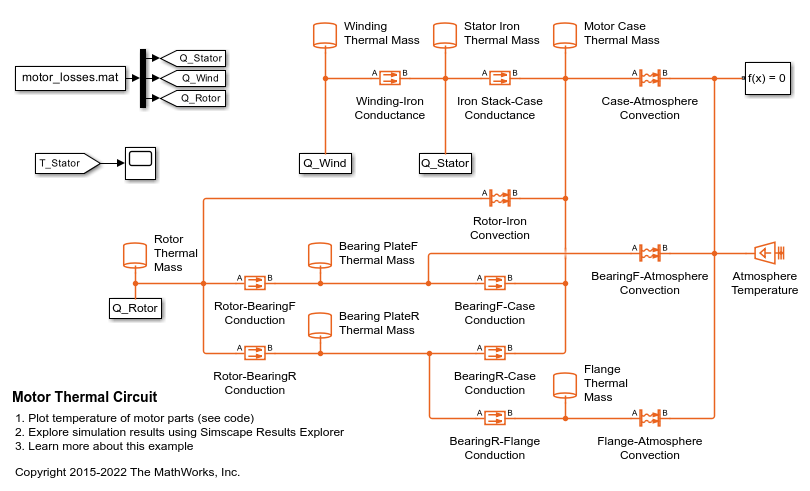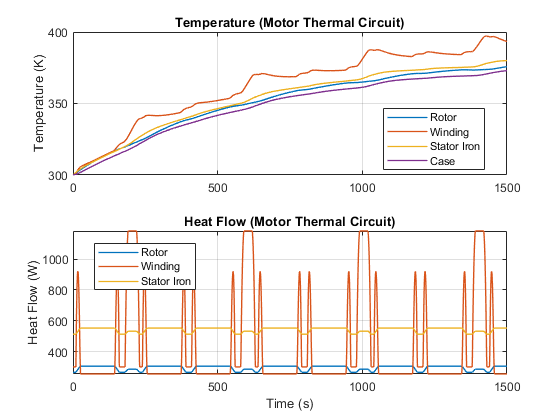电机热路
此示例展示如何使用集总参数模型来仿真无刷伺服电机的热行为。定子铁堆、定子绕组和转子中因功率损耗产生的热量由三个热流源表示:定子铁耗 (Q_Iron)、绕组功耗 (Q_Wind)、磁化和涡流转子损耗。这些损耗在电机典型循环仿真期间记录并存储在 motor_losses.mat 文件中。电机热路由热导率、热质量和对流传热模块组成,它们在绕组、定子铁芯、电机外壳、转子、前后轴承板和电机安装法兰等电机部件中再现热路径。电机通过外壳-大气、法兰-大气和后板-大气接触件与大气交换热量。通过将理想温度源设置为 300 K 来仿真环境条件。
模型

来自 Simscape 记录的仿真结果
